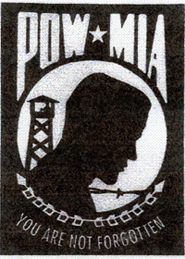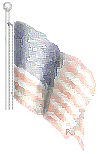SERVICEMEN WRITE (to Joy Hanson, Editor of the Ellsworth News)
Soldiers’ Addresses
Pvt. Leo R. Severson
c-o Douglas Aircraft Co., Long Beach, Calif.
Pvt. Lawrence F. Doden
Train, H. Q. Co., 14th Arm. Div., U.S. Army, Barracks 710, Camp Chaffee, Ark.
Pvt. Newman Stangeland
365th M. P. E. G. Co., Internment Camp, Fort Leonard Wood, Mo.
Pvt. H. W. Vining
98th Fighter Squadron, Drew Field, Tampa, Fla.
Source: Ellsworth News, Ellsworth, IA, Dec. 30, 1942
![]()
Las Vegas, Nev.
Dear Joy:
Being it is pretty early A. M. and that I have no duties till almost noon I’ll write the letter I promised.
I had so many times wanted to write from Long Beach. Hours I put in were many and I was a pretty tired fellow the few I had off.
I graduated Tuesday morning of this week. I received a diploma with special mentionings. I actually had a straight average grade of ninety. I’m proud of it. Also no one who has his mind and heart in aviation as I, even with the bonehead my shoulders support, can absorb his idea of school easily.
Here it is Friday the same week and I am in school again.
I’m at a gunnery school and you can imagine the noise of planes in the air and machine guns barking from every direction.
I’m going through classification tests for first few days.
Yesterday I had my altitude tests. I suppose your wondering how I felt way up in the air. Funny thing, I didn’t have to leave the ground. They bring the same conditions to you in an airtight chamber.
It was same as 5000 feet first time. No oxygen mask. It was same reaction as flying at that altitude.
Next time they made it to 12,000. It was a bit hard to breathe but not bad.
Then came 38,000 feet. We used oxygen from 12,000 on up. At times I thought I had a headache. Other times I thought my eardrums would break. I got a couple of bends in the stomach to make things worse.
We stayed at 28,000 for three hours. Of course I couldn’t quite make it all the way. But am sure I stood it long enough to pass.
Today I know will be as exciting as the first. The rest to follow will be like all my army career days, something new and something I’ll always remember.
So, Joy, to one in a million from one in the service, please send my News to the new address.
Greet and let me say hello through your paper to all my friends.
Pvt. Leo R. Severson
Student Detachment, Class 43-9, Las Vegas Gunnery School, Las Vegas, Nev.
Source: Ellsworth News, February 10, 1943
![]()
S. SGT. SEVERSON BELIEVED TO BE GERMAN CAPTIVE
ELLSWORTH—Word has been received here by Mr. and Mrs. O. O. Severson that their son, T. Sgt. Leo Severson is missing in action while on an air raid mission over Germany.
Sergeant Severson was reported on his eleventh raid from a base in England on Oct. 9, which was his birthday, when he failed to return.
A letter received from a lieutenant attached to the same air contingent told the Seversons that all the men aboard the bomber on which Sergeant Severson was an engineer-gunner were seen to parachute to earth and are believed to be prisoners of the nazis
The lieutenant also declared that the Ellsworth serviceman was one of the best engineers in his outfit.
Source: Daily Freeman Journal, Webster City, IA - Nov. 26, 1943
![]()
Hear From Leo Severson
By way of a cablegram from England, Leo Severson, who is a prisoner-of-war in Germany, conveys word of his parents here, Mr. and Mrs. Ole O. Severson, that he is o.k. No further information was received.
Source: Ellsworth News, Ellsworth, IA - Jan. 12, 1944
![]()
Leo Severson, German Prisoner, Now in France
(This is the most welcome letter I have received in all my life. It is from T-Sgt. Leo R. Severson, who has been in a Germany prison camp since Oct. 9, 1943. Leo writes of his experiences up to the day he landed in enemy territory. He will give us the rest of the story some other day; but that can wait, as long as we know he is safe—and out of the hands of the Germans.—Joy.)
LaHarve, France.
Dear Joy:
Now it can be told.
Joy, have been wanting to write for many months but I was limited to a small supply of stationery per month by the Jerry. Of these I wrote home and to my daughter (Barbara June) in Detroit.
Here are few of my highlights of foreign service. I came across approximately twenty-three months ago. I didn’t last long in combat. About three months to be exact.
My first raid was Aug. 17, 1943. We hit Sweinfort, Germany. This raid was a big one. Our losses were high but Jerry’s was still higher. We lost 60 Forts (Jerry 147 fighters). My first impression was I felt a bit scared as we entered France and enemy territory. The first few bursts of flak came and passed. I had my first half of the enemy’s fire. More and much more was to come. About an hour from the garget we were intercepted by enemy fighters. They zigged and zagged through formations, taking their toll. We gunners didn’t have to look for targets to fire at—there were Jerry planes all about. When we were a few miles from the target the enemy planes began to leave. Now in front of us lay completely dotted spots from ground to several thousand feet higher than our formation. We passed out I. P. (initial point). Bomb day doors were wide open. Bombardiers were lining up their object in their bombsights. A burst of flak hit our lead ship. All that remained was a black cloud where once ten men flew a great ship. We slid into lead position and were No. 1 ship to have “bombs away.” Being our first mission we released early, missing by a margin. The rest of the formation hit the target with some effective damage. But the target or any target must be completely damaged. So it would call for a future raid.
A few of my raids were nothing of too great an importance: Paris, Stuttgart, Frankfort. Last mentioned was when I got my first enemy fighter. A Me-110-twin-engine plane was coming in from behind, firing rockets. (First time we met up with one of Jerry’s best weapons. As the plane closed in I got him in my sights at 750 yards and kept constant fire, until he fell off on the right wing flaming. He crashed and burned. My navigator (Wm. Turcotte, Columbus, Miss.) got another. Leonard Waldron (of Ohio) got another.
Another raid I felt was of great importance was Emden, Germany. This target was gateway to Ruhr Valley and sub pens. The raid was first time A. A. F. used Pathfinder in daylight. We were briefed for 8/10 to 9/10 clouds. Meaning we would see very little of the target. We were right, we saw, as we crossed the bay between Belgium and Germany. Specks! (Meaning sub pens.) With the target marked, we released our bombs. They hit their mark. When recon. photos were taken, we found it 90% success. Another pioneer feat ended in success.
Now I’ll relate some of the last missions. The fatal day, Oct. 9, 1943 (30 years from the day I was born—Oct. 9, 1914) we were making one of the longest and lowest flights by our group. Fly over a target at 12,000 feet (normal operation on raids from 20,000 to 28,000 feet). The target, Anklam, Germany. We couldn’t carry enough gas in the tanks. So with half bomb bay of 500 lb. bombs and fire bombs, we added other half bomb tank. We were to fly over mostly water. Cross Denmark, come into enemy territory north of Berlin, make turn, hit our target on way out.
After entering the fighter range we were jumped by nearly 500 various single and twin-engine fighters.
As we went into action rocket-firing twin-engine fighters picked us out. Our shells passed each other in atmosphere. Bullets ripped into our plane at all stages and angles. Our radioman (Robert J. Smith of New York City, N. Y.) called “fire in No. 4 engine.” I called for co-pilot to cut fuel to that engine and release bombs by emergency bomb release. By now we were far out out of formation. We were easy bait. We lasted possibly another ten minutes when we were forced to leave the ship—those that were able. The lucky ones were my bombardier (James Strunk, Rochester, N. Y.) and myself. I never remember leaving the ship or landing. I had been injured in the ship. I suffered brain concussion and leg concussion; my navigator, gash across his right cheek; co-pilot, broken right ankle. The rest were either killed or couldn’t get out. These were some of the finest men I ever knew, and possible ever will meet again. May they “rest in peace.”
They include: Pilot, Alexander Stewart, Spokane, Wash.; radio, Robert J. Smith, New York City, N. Y.; ball turret, Wm Keefer, Pennsylvania; left waist gunner, Durell Clayton, Pennsylvania; right waistgunner, Leonard Waldron, Ohio; tail gunner, Charles Chase, Salt Lake City.
Before I go further, I recall now the flight of previous day—Oct. 8. We bombed Bremen. We had to go through 450 flak guns. Actually, it was hard to see planes in your formation. You could get out and walk from where you were to the ground on black flak puffs.
We had a new ship on this raid. When we returned, I counted 110 holes from nose to between waist guns and radio door, including wings. That was enough for me. My upper turret’s plexiglas was blown out. It made it pretty cold. I later heard, after other buddies entered prison camp, that plane was in repair for one month. So you see they come home pretty well shot up.
Well, Joy, this is pretty big letter. I’ll write a bit about rest later. Great stay here Hope be home some day soon. Hope shall be able to come back to the old home town for a while.
Source: Ellsworth News, Ellsworth, IA - May 30, 1945
![]()
Leo Russell Severson was born Oct. 14, 1914 to Ole M. and Lena Stockade Severson. He died in 1989 and is buried in Arlington National Cemetery, Arlington, VA.
Sgt. Severson spent 20 months in a German prison camp in 1943-1944. He was awarded the Air Medal and Oak Leaf cluster.
Sources: Daily Freeman Journal, Webster City, IA
ancestry.com
![]()

